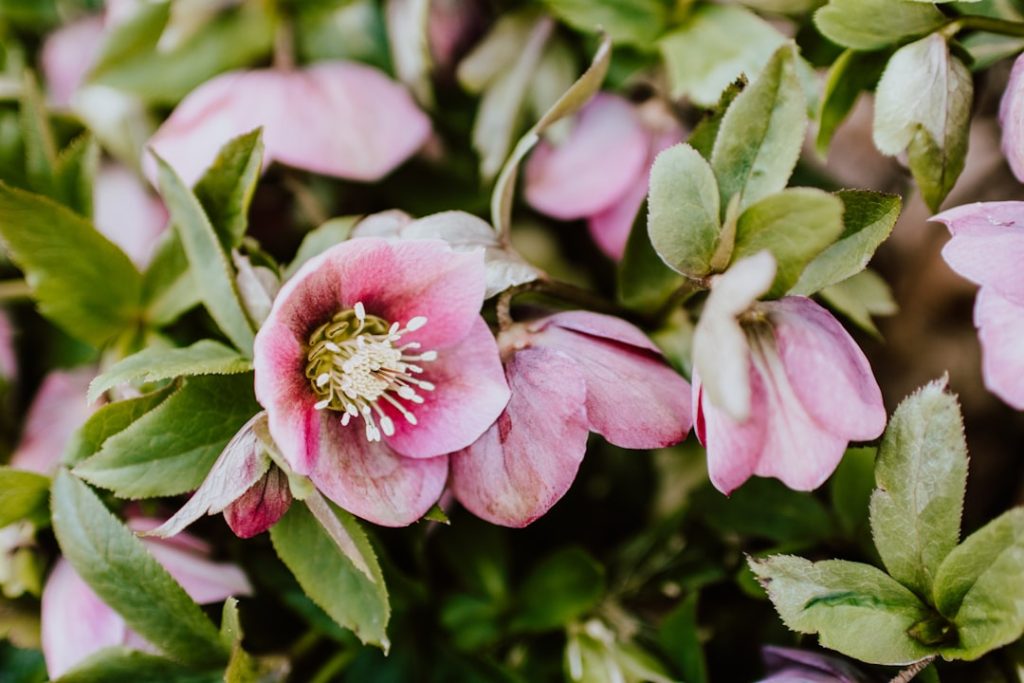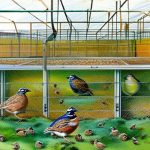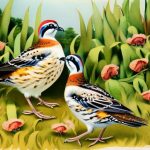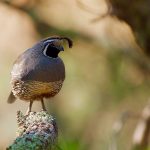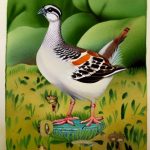Bobwhite quail, also known as northern bobwhite, are small, ground-dwelling birds native to North America. They are popular game birds and are also raised for their meat and eggs. Breeding bobwhite quail can be a rewarding and profitable endeavor for those interested in poultry farming or wildlife conservation. Bobwhite quail breeding requires careful attention to their natural behaviors and habitat needs in order to successfully raise healthy birds.
Breeding bobwhite quail begins with selecting healthy breeding stock. It is important to choose birds that are free from disease and genetic defects. Breeding pairs should be housed in spacious aviaries or outdoor enclosures that mimic their natural habitat. Providing a diet rich in protein and essential nutrients is crucial for breeding success. Additionally, creating a suitable nesting environment and providing proper care during the breeding season are essential for the health and well-being of the birds.
Table of Contents
Key Takeaways
- Bobwhite quail breeding is an important aspect of conservation efforts for this species.
- Signs of the breeding season include increased vocalization and territorial behavior.
- Courtship and mating behavior involve elaborate displays and vocalizations by males to attract females.
- Nesting and egg laying typically occur in grassy or brushy areas, with females laying up to 12 eggs.
- Incubation and hatching take about 23 days, with both parents sharing the responsibility of incubating the eggs.
- Caring for chicks involves the parents teaching them to forage for food and avoid predators.
- Conservation efforts for bobwhite quail include habitat restoration and predator control to support their breeding success.
Signs of the Breeding Season
The breeding season for bobwhite quail typically begins in the spring and extends into the summer months. As the breeding season approaches, male bobwhites become more vocal, calling out with their distinctive “bob-white” whistle to attract females. This vocalization is a key sign that the breeding season is underway. Additionally, male bobwhites may engage in aggressive behaviors, such as chasing and fighting with other males, as they compete for the attention of females.
Female bobwhite quail also exhibit signs of readiness to breed during this time. They become more receptive to the advances of males and may engage in courtship behaviors such as head-bobbing and wing-fluttering. As the breeding season progresses, females will begin to seek out suitable nesting sites and prepare to lay their eggs. Observing these behavioral cues can help breeders determine when their bobwhite quail are ready to breed and provide the necessary support for successful reproduction.
Courtship and Mating Behavior
During the breeding season, male bobwhite quail engage in elaborate courtship displays to attract females. These displays often involve puffing up their feathers, strutting, and vocalizing to demonstrate their fitness as potential mates. Male bobwhites may also engage in “tidbitting,” where they offer food to females as a courtship ritual. This behavior not only serves as a display of the male’s ability to provide for a potential mate but also helps to establish a bond between the pair.
Once a female has been courted successfully, mating occurs through a brief but vigorous copulation process. Male bobwhites will mount the female from behind and transfer sperm to fertilize her eggs. This process may be repeated multiple times over the course of the breeding season as females produce multiple clutches of eggs. Understanding the courtship and mating behaviors of bobwhite quail is essential for breeders to support successful reproduction and ensure the health and genetic diversity of their breeding stock.
Nesting and Egg Laying
After mating, female bobwhite quail will seek out suitable nesting sites to lay their eggs. They prefer to nest on the ground in areas with dense vegetation or cover to provide protection from predators. Nesting materials such as grass, leaves, and feathers are used to create a shallow depression in which the eggs are laid. Female bobwhites typically lay between 12-16 eggs per clutch, with each egg being small and speckled in appearance.
Once the eggs are laid, the female will begin the incubation process, sitting on the eggs to keep them warm and protected. It is important for breeders to provide a quiet and secure environment for nesting females to minimize disturbances that could cause them to abandon their nests. Additionally, ensuring that nesting areas are free from predators such as snakes and rodents is crucial for the survival of the eggs and chicks. By understanding the nesting and egg-laying behaviors of bobwhite quail, breeders can take steps to support successful reproduction and increase the likelihood of hatching healthy chicks.
Incubation and Hatching
The incubation period for bobwhite quail eggs lasts approximately 23-24 days. During this time, the female will diligently tend to her nest, turning the eggs regularly to ensure even heat distribution and humidity levels. It is important for breeders to monitor the incubation process closely, providing supplemental heat if necessary and checking for signs of infertility or egg viability. Proper humidity levels are also crucial for successful hatching, as overly dry or humid conditions can lead to poor hatch rates or developmental issues in the chicks.
As the incubation period nears its end, breeders can expect to see signs of hatching as the chicks begin to pip through their eggshells. Pipping is the process by which chicks use their egg tooth to break through the shell and emerge into the world. Once hatched, chicks are precocial, meaning they are born with their eyes open and are able to move around shortly after hatching. Providing a warm and safe brooding environment is essential for the health and well-being of the newly hatched chicks. By understanding the incubation and hatching process, breeders can take proactive measures to support successful hatching and ensure the vitality of their bobwhite quail chicks.
Caring for Chicks

Caring for bobwhite quail chicks requires careful attention to their nutritional needs and environmental requirements. Newly hatched chicks should be provided with a brooder that offers warmth, protection from drafts, and access to clean water and chick starter feed. It is important to monitor the temperature in the brooder closely, as chicks are unable to regulate their body temperature effectively in the early days of life.
In addition to providing proper nutrition and warmth, breeders should also be mindful of social dynamics within chick groups. Chicks should be observed for signs of aggression or bullying, as dominant individuals may prevent others from accessing food and water. Providing ample space and multiple feeding and watering stations can help mitigate these issues and ensure that all chicks have equal access to resources. By understanding the needs of bobwhite quail chicks and providing attentive care, breeders can support their growth and development into healthy adult birds.
Conservation Efforts for Bobwhite Quail
In recent years, bobwhite quail populations have declined significantly due to habitat loss, predation, and changes in land use practices. As a result, conservation efforts have been initiated to protect and restore bobwhite quail populations across their range. These efforts include habitat restoration projects, predator control measures, and public awareness campaigns aimed at promoting responsible land management practices.
One key aspect of bobwhite quail conservation is the establishment of protected areas where habitat can be managed specifically for the benefit of these birds. These areas may include grasslands, shrublands, or early successional habitats that provide suitable nesting sites and food sources for bobwhite quail. By creating and maintaining these protected areas, conservationists can help ensure that bobwhite quail have access to the resources they need to thrive.
In addition to habitat management, conservation efforts also focus on addressing other threats to bobwhite quail populations, such as predation by invasive species or overhunting. By implementing targeted predator control measures and regulating hunting practices, conservationists can help reduce mortality rates among bobwhite quail and increase their chances of survival.
Furthermore, public education and outreach play a crucial role in bobwhite quail conservation efforts. By raising awareness about the importance of preserving habitat for these birds and promoting sustainable land management practices, conservationists can garner support from landowners, policymakers, and the general public. This collective effort is essential for ensuring the long-term viability of bobwhite quail populations and preserving them for future generations.
In conclusion, breeding bobwhite quail requires a deep understanding of their natural behaviors and habitat needs. By recognizing the signs of the breeding season, supporting courtship and mating behaviors, providing suitable nesting environments, monitoring incubation and hatching processes, caring for chicks, and contributing to conservation efforts, breeders can play a vital role in ensuring the health and sustainability of bobwhite quail populations. Whether for commercial purposes or wildlife conservation, responsible breeding practices are essential for preserving these iconic birds for generations to come.
As the bobwhite quail breeding season approaches, it’s essential to ensure that their coop is well-prepared for the colder months. One crucial aspect to consider is providing adequate heating for the coop. In a recent article on PoultryWizard, they discuss the importance of choosing the right heater for a chicken coop, offering valuable insights and recommendations for maintaining a comfortable and safe environment for poultry during the winter months. This article provides practical tips that can be adapted to ensure the well-being of bobwhite quails during their breeding season. For more information on creating an ideal environment for your quails, check out the article on choosing the right heater for a chicken coop from PoultryWizard.
FAQs
What is the bobwhite quail breeding season?
The bobwhite quail breeding season typically occurs in the spring and early summer, with peak breeding activity occurring from April to June.
How do bobwhite quails breed?
Bobwhite quails are monogamous and form pair bonds during the breeding season. Males attract females through courtship displays and calls, and mating occurs through copulation.
Where do bobwhite quails build their nests?
Bobwhite quails build their nests on the ground, typically in grassy or brushy areas. The female constructs the nest by scraping a shallow depression in the ground and lining it with grass and other plant materials.
How many eggs do bobwhite quails lay during the breeding season?
Female bobwhite quails typically lay 10-20 eggs in a single clutch, with an average of 12-16 eggs. The eggs are incubated for about 23-24 days before hatching.
What is the role of the male bobwhite quail during the breeding season?
The male bobwhite quail plays a role in defending the nesting territory and providing food for the female during incubation. After the eggs hatch, both parents share in the care and feeding of the chicks.
Meet Walter, the feathered-friend fanatic of Florida! Nestled in the sunshine state, Walter struts through life with his feathered companions, clucking his way to happiness. With a coop that’s fancier than a five-star hotel, he’s the Don Juan of the chicken world. When he’s not teaching his hens to do the cha-cha, you’ll find him in a heated debate with his prized rooster, Sir Clucks-a-Lot. Walter’s poultry passion is no yolk; he’s the sunny-side-up guy you never knew you needed in your flock of friends!

